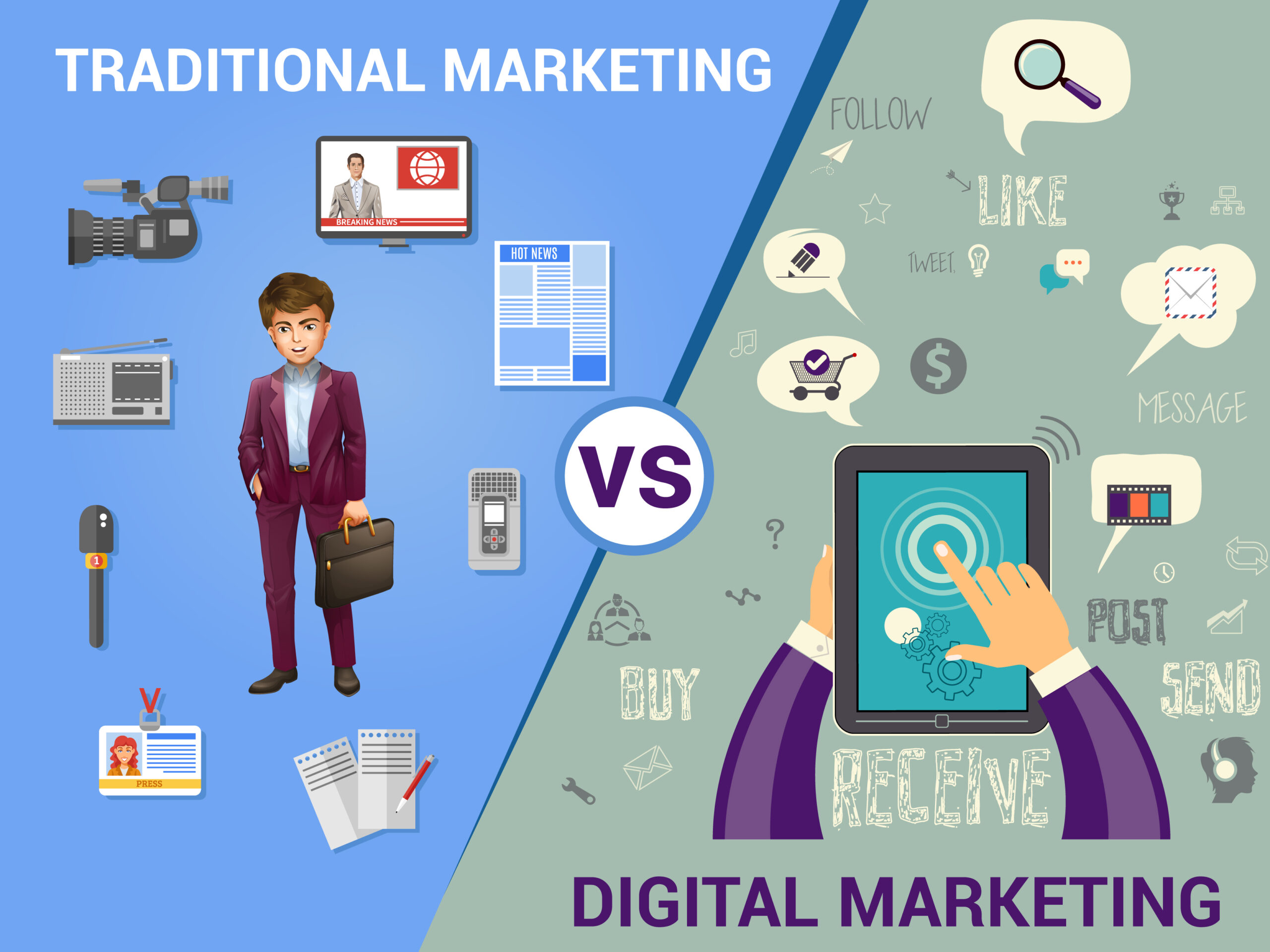Traditional Marketing vs Digital Marketing
Marketing is the art and science of selling products and services. Even if you have created the greatest product on earth, you’d have a hard time selling it without any marketing. Marketing helps businesses to identify and understand their target markets, develop and promote their products and services, and build and maintain relationships with their customers and partners.
There are different approaches to marketing that suit different goals, budgets, and contexts. Two of the most common and contrasting approaches are traditional marketing and digital marketing. Traditional marketing refers to the use of conventional media channels, such as print, radio, television, and billboards, to reach a mass audience. Digital marketing refers to the use of online and mobile platforms, such as websites, social media, email, and search engines, to reach a specific and interactive audience.
Both traditional and digital marketing have their own advantages and disadvantages, depending on the type, size, and industry of the business, as well as the preferences and behaviors of the customers․
Pros and Cons of Traditional Marketing
Pros:
- Broad reach: Traditional marketing can reach a large and diverse audience, especially through mass media channels, such as TV or radio, that have high penetration and coverage․
- Tangible presence: Traditional marketing is tangible and physical, which means it can be seen, touched, or kept by customers.
- Familiarity: Traditional marketing is familiar and trusted by many customers, especially older generations, who are used to receiving and consuming information through offline channels.
Cons:
- Cost: Traditional marketing can have high opportunity costs, as it may not generate the desired return on investment or may be less efficient than digital marketing methods.
- Measurement: Traditional marketing can be difficult and challenging to measure and evaluate, as it may not provide accurate or timely data on the performance and effectiveness of the campaigns․
- Control: Traditional marketing may also have less control and feedback over the customer’s response and interaction, as it may not be able to customize or personalize the messages or to engage or communicate with the customers in real time.
Pros and Cons of Digital Marketing
Pros:
- Cost-effectiveness: Digital marketing can be more cost-effective and efficient than traditional marketing, as it can reach a large and targeted audience with a lower budget and a higher return on investment.
- Measurement: Digital marketing can be more easily and accurately measured and evaluated, as it can provide real-time and detailed data on the performance and effectiveness of the campaigns.
- Interaction: Digital marketing can enable more interaction and communication with customers, as it can deliver personalized and relevant messages and offers, and engage and communicate with customers in real time.
Cons:
- Information overload: Digital marketing can face the challenge of information overload, as customers may be exposed to too many messages and offers from different sources and channels, and may become overwhelmed or distracted.
- Algorithm changes: Digital marketing can be affected by algorithm changes, as the rules and criteria of the online platforms, such as search engines or social media, may change frequently and unpredictably, and may impact the visibility and ranking of the brand.
- Ethical issues: Digital marketing can raise some ethical issues, such as privacy, security, or transparency, as customers may be concerned about how their personal data and information are collected and used by the brand.
The choice of using traditional or digital marketing strategies depends on various factors, such as the brand’s goals, objectives, budget, resources, target audience, industry, and competitors. However, the best practice is to adopt an integrated marketing approach, that can combine the best of both worlds, and create a coherent and consistent marketing message and experience across multiple channels and platforms, that can reach and engage the audience more effectively and efficiently, and achieve the desired marketing outcomes.
